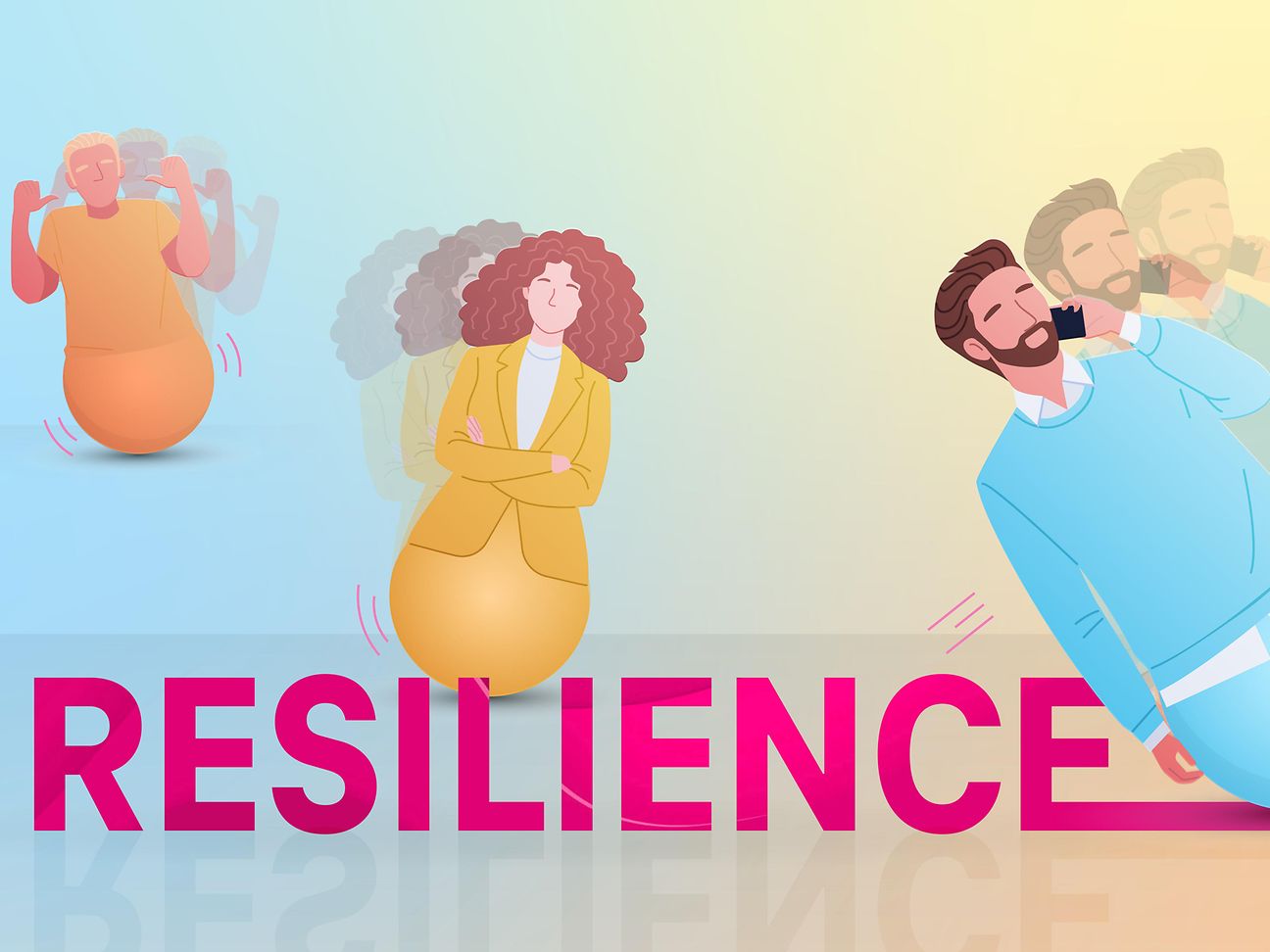

The Power of Resilience
People are tough. They can withstand great physical and psychological stress, survive difficult times and drastic changes. The ability to adapt to changing circumstances, to respond to crises, to cope with stress and to recover well is called resilience. The term originally comes from materials science and describes substances that always return to their original form even after extreme stress.
However, inner resilience differs from person to person. What represents a high psychological burden for one person, another perceives as an exciting challenge.
Stable bond helps to resist stress
Research today assumes that several different factors ensure a high level of psychological resilience. For example, it is well established that people who experienced a close bond with at least one constant, loving, reliable caregiver in their childhood are significantly more likely to develop good resilience. In acute stress situations, for example, they release lower amounts of the stress hormone cortisol.
Self-confidence and the experience that one can cope well with great challenges under one's own steam are considered essential for resilience. In this context, relevant experiences strengthen resilience in a process that lasts a lifetime. This means that adults, too, can improve their resilience and thus maintain the prerequisites for not perceiving crises as overwhelming and unsolvable events.
Realistic goals and the right resources
Other factors and experiences favor a pronounced psychological resistance. In many cases, they are interrelated or mutually dependent. These include, among others:
- Coherence: means the feeling of understanding connections and challenges. Also, the belief that it is worthwhile to face challenges and that life has meaning.
- Self-efficacy: The conviction that one can successfully make a difference and overcome difficult situations oneself. People who have experienced that something changes when they take action do not feel at the mercy of external circumstances.
- The right resources: Stable social contacts are considered a central resilience factor. They cushion people in difficult situations.
- Conflict management: People can cope well with acute stress. Persistent simmering conflicts, on the other hand, cause chronic stress and, in the worst case, make people ill. If our stress management systems are permanently activated, this can lead to exhaustion.
- Realistic goals and acceptance: If goals are unattainable, they frustrate and overwhelm us. A realistic picture of desire and reality creates a good starting point for self-actualization. In addition, people should accept what they cannot change. Fighting against it costs valuable resources without the desired result.
- Confidence: People who trust that things will change for the better are significantly more resilient. Therefore, we should not focus on deficits, but on what we have achieved.
More crisis resistance for society
As is the case for the human psyche, resilience and resistance to crises are also considered important prerequisites for organizations and social systems in order to function permanently and to be sustainable and successful. As the German "Zukunftsinstitut" writes: "A society that wants to be prepared for crises must [...] be able to do both - preserve the tried and true and adaptively develop the new. The new questions for the future are: How can individual and social systems arm themselves against the unforeseen? What strengthens the ability to survive in times of crisis? What provides systemic cohesion?" The researchers' answer: an adaptive system that dynamically combines stability and flexibility.
Pent-up demand in the economy
The Corona crisis and environmental disasters have shown that companies, entire industries and the economy as a whole have some catching up to do when it comes to resilience. The best example: supply chains that have proven all too fragile due to pandemic-related restrictions, shortages of raw materials or environmental impacts. To better counter threats, companies need to be prepared, for example by strengthening their risk management. For some years now, the international standard ISO 22316 has been intended to contribute to this by helping companies to create the appropriate foundations for greater crisis resilience. Among other things, appropriate investment in resilience activities, effective communication and a common understanding that commits managers to effectively strengthening resilience and anchors it as a corporate goal. Steering elements, thresholds and assessment criteria are then designed to ensure that threats are identified and assessed at an early stage.
New Work demands and promotes resilience
In addition, shared values in an organization are important prerequisites for dealing constructively and flexibly with drastic changes: A shared vision and purpose to which actions and behaviors can be aligned. This is what the ISO standard provides. And this becomes even more important in the context of New Work, when it comes to creating a basis for employees to deal with the stresses and strains of the modern working world. After all, new forms of work and comprehensive structural change demand adaptability, and new technologies require a resilient approach to digital stress. In addition, more personal responsibility, self-determination and self-organization are required - crucial building blocks of (work) organizations that are capable of acting and, at the same time, elementary resilience factors. In other words, New Work not only challenges the resilience of employees, it also strengthens some of its most important elements at the same time - through new freedoms, through scope for action, decision-making and design.

